These midcap stocks with 'Strong buy' & 'Buy' recos can rally over 24%; analysts say: With global markets getting volatile, some impact has been visible on the Indian market also. But if one looks at the broader market breadth, it is clear that the undercurrent is bullish. Keep an eye on liquidity which would be clear once in next few days numbers or the mutual fund flows are released. Also the market breadth in the next few sessions as that will determine what happens to mid-cap stocks in the medium term. If the market breadth stays positive then it is very likely that we might see more strength in mid-caps. has been panning out it is clear that there is no dearth of liquidity if the company is able is show better performance. With this trend visible it is clear that midcap stocks, especially where results are good have a high probability of staying in bullish mode for a longer period of time. In such conditions, market analysts are bullish on a few select mid-cap stocks from different sectors. On the list are select companies from different sectors. Unlike the past, this time the list is not dominated by companies from one particular sector. Making to the list are companies from infrastructure, small banks, real estate amongst others. Mid Cap stocks - Upside potential May 2, 2024 Company Name Fusion Micro Finance Strong Buy Analyst Count 10 PVR INOX Buy 22 Sunteck Realty Strong Buy 11 Birlasoft Buy 12 Vedant Fashions Buy 10 Equitas Small Finance Bank Buy 17 Kajaria Ceramics Buy 30 Upside Potential % MarketCap Rs Cr 42.7 5,242 38.9 13,350 37.9 6,431 30.6 17,951 29.0 23,169 26.7 11,019 24.5 19,202 source: et
6 largecap stocks with upside potential of up to 35%: After a corrective phase, the large and mid caps are once again in party mode. Large caps which had been lagging in a relative manner have been able to make a comeback, thanks to the fact the flows to the large cap mutual funds have seen a spike in the last two months. While the short term movement in the markets might impact the decision making process. But investing in not about a quarter or week, it is much more than them. If one looks at the long term, large caps are able to outperform and create wealth in a more sustainable manner. Large Cap Stocks with Score Improvement Month on Month Upside Potential - May 2, 2024 Company Name Latest Avg Score SBI Life Insurance Company 8 Avg Score 1M ago 6 Reco Strong Buy Analyst Count 32 * Upside Potential % 70.6 Inst Stake% 27.1 1Y Returns% 26.0 Market Cap Rs Cr 143,845 Company Name KPIT Technologies. Latest Avg Score B Avg Score 1M ago 7 Reco Buy Analyst Count 12 Upside Potential% 35.9 Inst Stake 23.2 1Y Returns% 63.0 Market Cap Rs Cr 40,920 Company Name Marico Latest Avg Score 8 Avg Score 1M ago 6 Reco Buy 41 25:5 26.9 44 66,996 Tata Consultancy Services 10 7 Hold 42 25.4 15.7 18.7 1,383,050 Avenue Supermarts B 6 Hold 25 197 12.4 31.1 299,464 Info Edge India B 6 Buy 20 15.5 36.5 60.3 78,312 Calculated from highest price target given by analysts source:et
Stock Radar: Fresh multi- year high in April! Why Biocon is a long-term pick for investors: Biocon stock broke out from a Symmetrical Triangle pattern last week on the monthly charts, which has opened room for it to head higher and hit fresh multi-year high. The stock remained range- bound in the last 3 months but witnessed a rebound after retesting its 200-Days EMA on the daily chart. "Biocon has been making a very good bullish candlestick pattern on the weekly and monthly charts. It has also managed to close above the psychological level of 300 helped by strong buying," said S Devarajan, head - technical & derivatives research Way2Wealth Brokers Private Limited. "On the monthly chart, Biocon has formed a Symmetrical Triangle pattern, which is a bullish continuation pattern. The stock broke out from the Symmetrical Triangle pattern last week with steady volumes," added Devarajan. "It is confirmed that the uptrend can be expected to accumulate from current levels. Our argument is further validated after the stock gave an upside breakout from falling resistance line on weekly chart," Way2Wealth report highlighted. The stock surged sharply on impressive volumes above its short-term exponential moving averages (20 days & 50 days) suggesting positive momentum. On the daily charts, the stock is trading well above most of the crucial short- and long- term moving averages such as 5,10,30,50,100 and 200-DMA. "The stock has also been moving between the long-term rising channel on the monthly chart and a trigger above 348/359 levels could induce further buying pressure for long-term gains," highlighted Devarajan. source: et
18% तक की बढ़त की संभावना वाले 5 पावर सेक्टर स्टॉक: कुछ सेक्टर ऐसे होते हैं, जिन्हें सड़क पर खोजा जाता है, फिर कूड़े में फेंक दिया जाता है और फिर दोबारा खोजा जाता है। शायद, पिछले तीन सालों में, स्ट्रीट सेक्टर को फिर से खोजने के मूड में है। पुनर्खोज अभियान में सबसे ऊपर पावर सेक्टर है। यह पुनर्खोज करीब 15 साल के अंतराल के बाद हुई है और शायद कंपनियों और उनके प्रमोटरों ने कई सबक सीखे हैं। अंतिम परिणाम यह हुआ कि 2014 तक, अधिकांश पावर कंपनियां दिवालिया हो गईं और कुछ ही सालों में, उनमें से कई IBC में चली गईं। जिन कंपनियों के प्रबंधन ने 2008 में दलाल स्ट्रीट के उत्साह के अनुसार नहीं चलने के लिए पर्याप्त सावधानी बरती थी, वे इन IBC परिसंपत्तियों में से कुछ को उचित मूल्यांकन पर खरीदने में सक्षम थीं, जिससे समेकन हुआ। एक अन्य सेगमेंट जो अपेक्षाकृत बेहतर स्थिति में था, वे या तो ऐसी कंपनियाँ थीं जो इस सेक्टर से बहुत पहले से पावर बिजनेस में थीं। पावर सेक्टर स्टॉक - अपसाइड पोटेंशियल अप्रैल 30, 2024 कंपनी का नाम नवीनतम औसत स्कोर रेको विश्लेषक गणना अपसाइड पोटेंशियल % इंस्ट स्टेक% मार्केट कैप टाइप 1 सप्ताह का रिटर्न % 1 मिलियन का रिटर्न % 1 वर्ष का रिटर्न % SJVN Ltd 1 होल्ड 5 18.2 4.8 बड़ा 6.6 12.9 285.7 मार्केट कैप करोड़ रुपये 53,858 कंपनी का नाम CESC Ltd नवीनतम औसत स्कोर 7 रेको खरीदें विश्लेषक गणना 9 अपसाइड पोटेंशियल % 17.4 इंस्ट स्टेक % मार्केट कैप टाइप 1 सप्ताह का रिटर्न % 1 मिलियन का रिटर्न % 73.1 मध्य 2.7 21.2 1Y रिटर्न % 115.2 मार्केट कैप करोड़ रुपये 19,526 कंपनी का नाम NTPC Ltd नवीनतम औसत स्कोर 8 खरीदें रेको विश्लेषक गणना अपसाइड संभावित% इंस्ट स्टेक% मार्केट कैप प्रकार 21 14.3 36.7 बड़ा 1 सप्ताह रिटर्न % 5.9 1M रिटर्न % 8.1 1Y रिटर्न% 111.1 मार्केट कैप करोड़ रुपये 352,086 कंपनी का नाम NLC इंडिया नवीनतम औसत स्कोर 6 रेको होल्ड करें विश्लेषक गणना 1 अपसाइड संभावित% 14.0 इंस्ट स्टेक% 11.7 मार्केट कैप टाइप बड़ा 1 सप्ताह का रिटर्न % 9.2 1 मिलियन का रिटर्न % 8.1 1 वर्ष का रिटर्न % 202.8 मार्केट कैप करोड़ रुपये 34,194 कंपनी का नाम टाटा पावर नवीनतम औसत स्कोर 6 रेको होल्ड विश्लेषकों की संख्या 19 * अपसाइड संभावित % 5.4 इंस्ट स्टेक % 20.3 मार्केट कैप टाइप बड़ा 1 सप्ताह का रिटर्न % 4.7 1 मिलियन का रिटर्न % 13.7 1 वर्ष का रिटर्न % 122.8 मार्केट कैप करोड़ रुपये 143,183 • विश्लेषकों द्वारा दिए गए उच्चतम मूल्य लक्ष्य से गणना की गई source:et
टेस्ला ने अगली पीढ़ी की 'गीगाकास्टिंग' विनिर्माण प्रक्रिया से हाथ पीछे खींचे बिक्री में गिरावट और बढ़ती प्रतिस्पर्धा के बीच टेस्ला ने एक अभिनव वन-पीस गीगाकास्टिंग विनिर्माण प्रक्रिया की योजना को त्याग दिया है। शुरुआत में विनिर्माण में क्रांति लाने और लागत कम करने के उद्देश्य से, टेस्ला ने वाहन अंडरबॉडी के लिए अपनी अधिक पारंपरिक तीन-पीस विधि को चुना है। यह निर्णय टेस्ला की रणनीतिक धुरी को दर्शाता है कि वह बड़े पैमाने पर ईवी बिक्री वृद्धि पर स्वयं-ड्राइविंग तकनीक की ओर बढ़ रहा है, जो हाल ही में छंटनी और कार्यकारी प्रस्थान को दर्शाता है। यह बदलाव मॉडल 2 के रद्द होने के बाद भी हुआ है और उत्पादन नवाचार के लिए अधिक रूढ़िवादी दृष्टिकोण का संकेत देता है। टेस्ला ने गीगाकास्टिंग में नवाचारों के लिए एक महत्वाकांक्षी योजना से हाथ पीछे खींच लिया है, जो इसकी अग्रणी विनिर्माण प्रक्रिया है, मामले से परिचित दो स्रोतों के अनुसार, एक और संकेत है कि इलेक्ट्रिक वाहन निर्माता गिरती बिक्री और बढ़ती प्रतिस्पर्धा के बीच छंटनी कर रहा है। टेस्ला गीगाकास्टिंग में अग्रणी रहा है, एक अत्याधुनिक तकनीक जो कार के अंडरबॉडी के बड़े हिस्से को डाई-कास्ट करने के लिए हजारों टन क्लैंपिंग दबाव वाले विशाल प्रेस का उपयोग करती है। एक सामान्य वाहन में, अंडरबॉडी में सैकड़ों अलग-अलग हिस्से हो सकते हैं। लोगों ने बताया कि गीगाकास्टिंग पर कदम पीछे हटना पिछली शरद ऋतु में हुआ था, इससे पहले कि टेस्ला ने फरवरी के अंत में एक बिल्कुल नई किफ़ायती कार के विकास को रोकने का फैसला किया, जिसे अक्सर मॉडल 2 कहा जाता है, जो एक-टुकड़ा गीगाकास्टिंग के साथ बनाया गया पहला वाहन होता। रॉयटर्स ने सबसे पहले 5 अप्रैल को मॉडल 2 के रद्द होने की सूचना दी। 23 अप्रैल को, जब इसने वॉल स्ट्रीट की उम्मीदों से कम आय जारी की, तो टेस्ला ने कहा कि मॉडल 2 की योजनाओं को टालने के बाद उसके पास "अधिक किफ़ायती" कारों के उत्पादन के लिए एक सरल, तेज़ योजना है, जिसकी लागत $25,000 होने की उम्मीद थी और जिसे 2025 की दूसरी छमाही में जारी किया जाना था। इसके बजाय, टेस्ला के अधिकारियों ने कहा कि यह मौजूदा प्लेटफ़ॉर्म और उत्पादन लाइनों का उपयोग करके किफ़ायती मॉडल का उत्पादन करेगा। एक निवेशक कॉल पर, मुख्य कार्यकारी एलन मस्क ने नियोजित नई पेशकशों या उनके लक्षित मूल्यों के बारे में विवरण देने से इनकार कर दिया। टेस्ला ने मॉडल 2 के लिए बनाई गई छोटी गाड़ी के प्लैटफ़ॉर्म को पूरी तरह से नहीं छोड़ा है। इसके बजाय, यह उसी प्लैटफ़ॉर्म पर एक सेल्फ़-ड्राइविंग रोबोटैक्सी विकसित करने की दिशा में आगे बढ़ेगा, रॉयटर्स ने 5 अप्रैल की स्टोरी में बताया। ऑटोमेकर के गीगाकास्टिंग संचालन से परिचित दो स्रोतों में से एक ने कहा कि इसमें शामिल आपूर्तिकर्ता अब अगली पीढ़ी के वाहन के लिए टेस्ला की तीन-टुकड़ा प्रक्रिया को अपना रहे हैं। source: et
भारत परमाणु ऊर्जा पर बड़ा दांव लगा रहा है; जानिए क्यों: भारत को ऊर्जा के विश्वसनीय और स्वच्छ स्रोतों की आवश्यकता है, जिसके कारण सरकार ने परमाणु ऊर्जा पर ध्यान केंद्रित किया है। भारत मध्यम से दीर्घ अवधि में अपने ऊर्जा मिश्रण में परमाणु ऊर्जा पर बड़ा दांव लगा रहा है, देश अपनी परमाणु क्षमता को वर्तमान 8180 मेगावाट से बढ़ाकर वित्त वर्ष 32 तक 22,800 मेगावाट करने की योजना बना रहा है। तर्क काफी सरल है। भारत को तीन ताकतों - एक उभरती अर्थव्यवस्था, ऊर्जा संक्रमण और जलवायु परिवर्तन - के अनूठे संयोजन द्वारा परिभाषित समय में खुद को हाइपरचार्ज करने के लिए अधिक बिजली की आवश्यकता है। उस चौराहे पर परमाणु ऊर्जा के बारे में बातचीत है, जिसे स्वच्छ ऊर्जा के स्रोत के रूप में देखा जाता है। भारत ने 2030 तक अपनी बिजली स्थापित क्षमता का 50% गैर-जीवाश्म ईंधन आधारित ऊर्जा संसाधनों से प्राप्त करने की प्रतिबद्धता जताई है। इसने 2070 के लिए अपना शुद्ध शून्य उत्सर्जन लक्ष्य भी निर्धारित किया है। अर्थव्यवस्था में वृद्धि और मौसम के पैटर्न में बदलाव के साथ बिजली की मांग भी बढ़ने वाली है। परमाणु ऊर्जा को ईंधन के एक स्वच्छ स्रोत के रूप में देखा जाता है जो ग्रिड को संतुलित करने में मदद करता है। सरकार के अनुसार, परमाणु ऊर्जा क्षमता का विस्तार देश के ऊर्जा संक्रमण में मदद करेगा, ताकि शुद्ध शून्य अर्थव्यवस्था लक्ष्य को पूरा किया जा सके। भारत के ऊर्जा मिश्रण में परमाणु ऊर्जा होने के क्या लाभ हैं? ईंधन का एक स्वच्छ स्रोत होने के अलावा, परमाणु ऊर्जा बिना रुके बेसलोड बिजली भी प्रदान करती है। इसे अक्षय ऊर्जा के विपरीत भंडारण की आवश्यकता नहीं होती है, जो प्रकृति में रुक-रुक कर आती है। इसका मतलब है कि परमाणु ऊर्जा बिजली ग्रिड को स्थिर रखने और ऊर्जा सुरक्षा प्रदान करने में महत्वपूर्ण भूमिका निभा सकती है। परमाणु ऊर्जा के खिलाफ तर्क? परमाणु ऊर्जा एक उच्च जोखिम वाला स्रोत बना हुआ है। ईंधन की बर्बादी, रिएक्टर में अनियंत्रित परमाणु प्रतिक्रिया और सीमित यूरेनियम भंडार कुछ प्रमुख चिंताएँ हैं। source: et
5 एग्रो-केमिकल स्टॉक जिनमें 30% तक की उछाल की संभावना है: महत्वपूर्ण बात यह निर्धारित करना है कि ये गिरावटें आवर्ती चक्र का हिस्सा हैं या एक बार की घटना का परिणाम हैं। एग्रोकेमिकल सेक्टर वर्तमान में विशिष्ट, अलग-अलग घटनाओं के कारण मंदी में है। इसमें उद्योग की इन्वेंट्री में अचानक वृद्धि और कोविड-19 प्रतिबंधों के बाद चीनी उत्पादन के फिर से शुरू होने के बाद बाजार में आई अधिक आपूर्ति शामिल है। परिणामस्वरूप, उस समय शुरू हुई तेजी के शुरुआती चरणों के दौरान असाधारण रूप से अच्छा प्रदर्शन करने के बावजूद। चार साल पहले, पूरे एग्रोकेमिकल सेक्टर का पुनर्मूल्यांकन किया गया था, जिसमें घरेलू बाजारों पर केंद्रित भारतीय कंपनियों पर विशेष ध्यान दिया गया था। हालाँकि, उन्हें जल्द ही चुनौतियों का सामना करना पड़ा क्योंकि चीनी प्रतिस्पर्धियों ने अपनी गतिविधियाँ तेज़ कर दीं। कभी-कभी, ये चुनौतियाँ, जो स्टॉक में कम प्रदर्शन की ओर ले जाती हैं, इन क्षेत्रों और स्टॉक में दीर्घकालिक दृष्टिकोण से निवेश करने के अवसर प्रदान करती हैं, खासकर जब समग्र क्षेत्र नकारात्मक की तुलना में अधिक सकारात्मकता दिखाता है। इन कंपनियों के प्रबंधन के हालिया बयानों के अनुसार, इनमें से कई चुनौतियाँ अस्थायी इन्वेंट्री मुद्दों से जुड़ी हैं, जो अब हल हो रही हैं। इससे यह सवाल उठता है: क्या एग्रोकेमिकल कंपनियों के सामने सबसे बड़ी समस्याएँ अब पीछे छूट गई हैं? या फिर अभी और भी समस्याएँ बाकी हैं और जैसे-जैसे वे सामने आ रही हैं, क्या उन समस्याओं के कारण स्टॉक की कीमतें बढ़ रही हैं? अगर प्रबंधन के साथ बातचीत की जाए, तो सिस्टम में ओवर इन्वेंट्री की सबसे बड़ी समस्या कम होने लगी है। चूंकि प्रबंधन अपनी बातचीत में काफी हद तक पारदर्शी रहा है, यह दर्शाता है कि इन कंपनियों ने अपने संचार में ईमानदार होने के महत्व को समझ लिया है और यही बात लंबी अवधि में मायने रखती है। कुछ कंपनियों के मामले में, दुनिया के दूसरे हिस्सों में बेमौसम बारिश और जलवायु संबंधी मुद्दे समस्याएँ पैदा कर रहे हैं। कुछ कंपनियों के मामले में, अचानक चीन द्वारा डंपिंग की गई और इससे कीमतों में गिरावट आई और ओवर इन्वेंट्री की स्थिति पैदा हो गई। एग्रो केम स्टॉक - अपसाइड पोटेंशियल 1 मई, 2024 कंपनी का नाम नवीनतम औसत स्कोर रेको विश्लेषक गणना अपसाइड पोटेंशियल % पीआई इंडस्ट्रीज 10 खरीदें 25 56.0 बेयर क्रॉपसाइंस 9 खरीदें 9 30.6 सुमितोमो केमिकल इंडिया 6 खरीदें 8 24.7 रैलिस इंडिया 8 होल्ड करें 16 22.8 इंसेक्टिसाइड्स (इंडिया) 7 खरीदें 3 14.2 विश्लेषकों द्वारा दिए गए उच्चतम मूल्य लक्ष्य से गणना की गई source: et
34% तक की वृद्धि की संभावना वाले 6 निजी और पीएसयू बैंकों का समूह: जब आरबीआई द्वारा किसी बड़े निजी क्षेत्र को कुछ कारोबार बंद करने का निर्देश दिया जाता है और शेयर 10% से अधिक गिर जाते हैं, तो यह सवाल उठना स्वाभाविक है कि क्या निजी क्षेत्र के बैंकों ने बाजार में अपने प्रदर्शन के मामले में अपना सर्वश्रेष्ठ प्रदर्शन किया है। बैंकिंग क्षेत्र की हर इकाई पर नज़र रखी जा रही है और बैंकों के विशाल आकार और संख्या को देखते हुए कुछ मुद्दे सामने आने ही वाले हैं। बैंकिंग क्षेत्र के परिचालन मैट्रिक्स पर क्या प्रभाव पड़ता है? यह समग्र आर्थिक विकास है। बैंक सभी क्षेत्रों को पूंजी की जीवन रेखा प्रदान करते हैं जो किसी भी अर्थव्यवस्था का हिस्सा होते हैं, चाहे वह खुदरा ऋण हो या कॉर्पोरेट ऋण। इसलिए जब ये क्षेत्र अच्छा प्रदर्शन करते हैं, तो बैंकों की ऋण वृद्धि अधिक होती है। क्या कोई संकेत है कि आर्थिक विकास में कमी आने वाली है, बिल्कुल नहीं। हां, एक बैंक को एक विशेष काम बंद करने के लिए कहा गया है, लेकिन इसका मतलब यह नहीं है कि उस बैंक के लिए यह अंत है, बैंकिंग शेयरों को भूल जाइए। बैंक अपने सिस्टम को बदल देगा और जल्द ही वह एक बार फिर से वही कारोबार करेगा। जो लोग नहीं जानते, उनके लिए यह पहली बार नहीं है कि RBI ने इस तरह की कार्रवाई की है। कुछ साल पहले ही एक अन्य बड़े निजी बैंक को भी ऐसा ही निर्देश दिया गया था और उसके सिस्टम को लागू करने के बाद। बैंकिंग स्टॉक - अपसाइड पोटेंशियल 1 मई, 2024 कंपनी का नाम नवीनतम औसत स्कोर रेको विश्लेषक गणना अपसाइड पोटेंशियल % एचडीएफसी बैंक 8 खरीदें 41 58.5 इंडसइंड बैंक 7 खरीदें 41 34.6 एक्सिस बैंक 9 खरीदें 41 24.4 बैंक ऑफ इंडिया 7 होल्ड करें 4 9.6 इंडियन बैंक 8 खरीदें 10 केनरा बैंक 10 खरीदें 15 9.4 7.7 विश्लेषकों द्वारा दिए गए उच्चतम मूल्य लक्ष्य से गणना की गई source:et
5 power sector stocks with upside potential of up to 18%: There are sectors which are discovered on the street, then thrown in dumps and then rediscovered. Probably, in the last three years, the street is more in a mood to rediscover the sectors. On top of the rediscovery mission is the power sector. This rediscovery has happened after a gap of close to 15 years and probably companies and their promoters have learned many lessons. The end result was that by 2014, most of the power companies were bankrupt and in a few years, a number of them went to IBC. The companies where the management had been careful enough not to go by what the Dalal Street euphoria was saying in 2008, were able to buy some of these IBC assets at reasonable valuations leading to consolidation. Another segment which was relatively better placed was either the companies which have been in power business much before this sector. Power sector stocks - Upside Potential April 30, 2024 Company Name Latest Avg Score Reco Analyst Count Upside Potential % Inst Stake% Market Cap Type 1Wk Returns % 1M Returns % 1Y Returns % SJVN Ltd 1 Hold 5 18.2 4.8 Large 6.6 12.9 285.7 Market Cap Rs Cr 53,858 Company Name CESC Ltd Latest Avg Score 7 Reco Buy Analyst Count 9 Upside Potential % 17.4 Inst Stake % Market Cap Type 1Wk Returns% 1M Returns % 73.1 Mid 2.7 21.2 1Y Returns % 115.2 Market Cap Rs Cr 19,526 Company Name NTPC Ltd Latest Avg Score 8 Buy Reco Analyst Count Upside Potential% Inst Stake% Market Cap Type 21 14.3 36.7 Large 1Wk Returns % 5.9 1M Returns % 8.1 1Y Returns% 111.1 Market Cap Rs Cr 352,086 Company Name NLC India Latest Avg Score 6 Reco Hold Analyst Count 1 Upside Potential % 14.0 Inst Stake% 11.7 Market Cap Type Large 1Wk Returns % 9.2 1M Returns % 8.1 1Y Returns % 202.8 Market Cap Rs Cr 34,194 Company Name Tata Power Latest Avg Score 6 Reco Hold Analyst Count 19 * Upside Potential % 5.4 Inst Stake % 20.3 Market Cap Type Large 1Wk Returns % 4.7 1M Returns % 13.7 1Y Returns % 122.8 Market Cap Rs Cr 143,183 • Calculated from highest price target given by analysts source:et



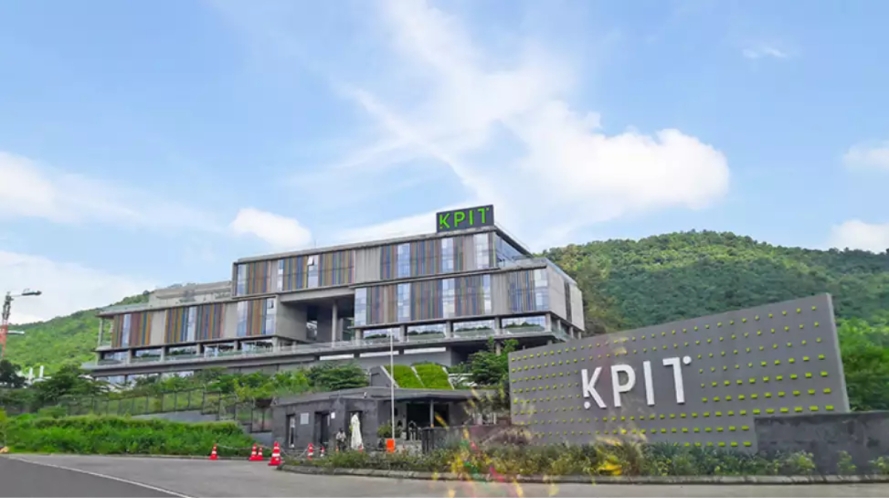

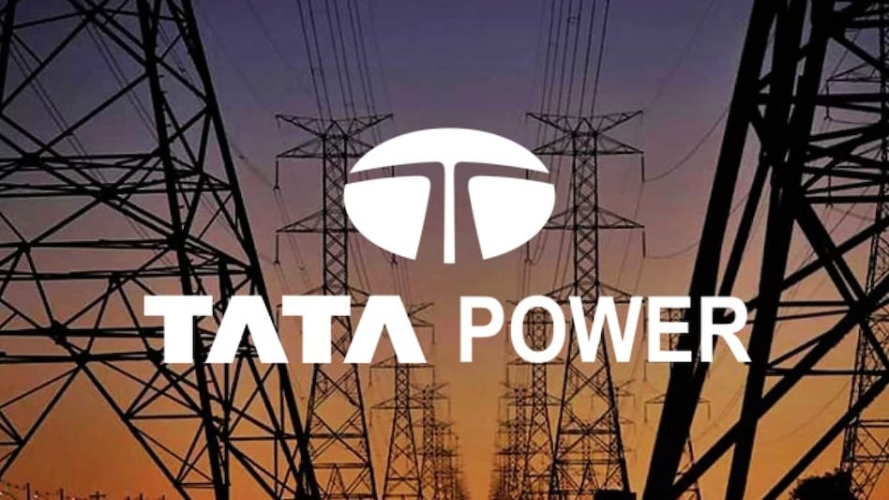
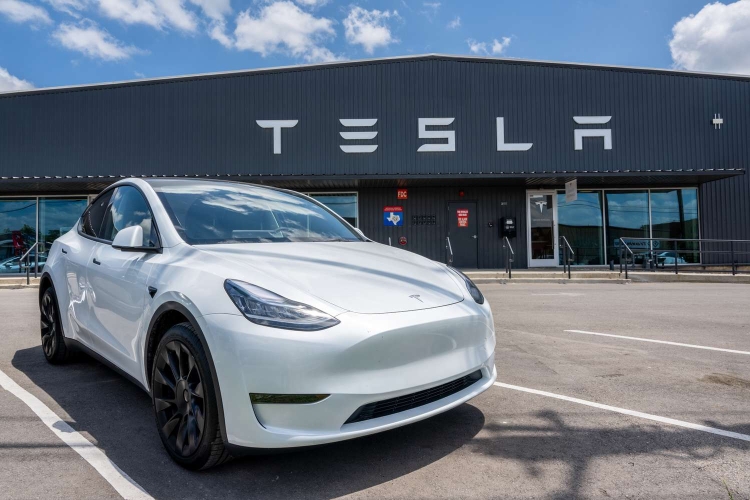
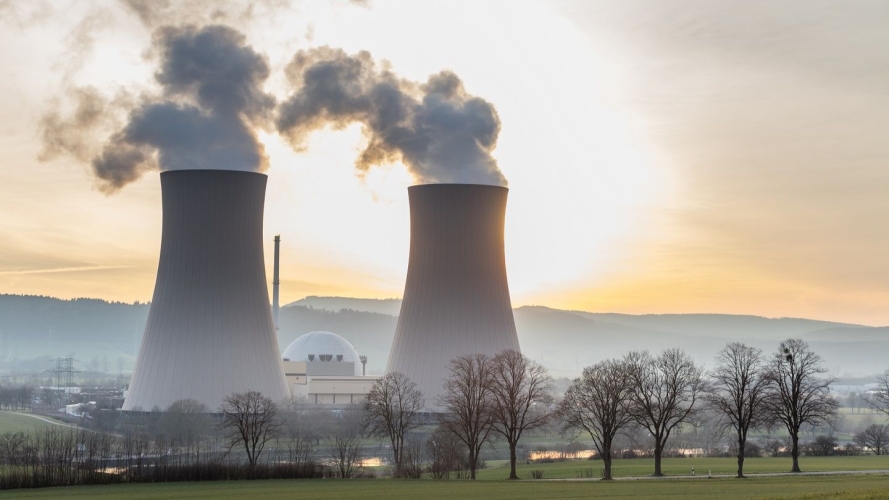
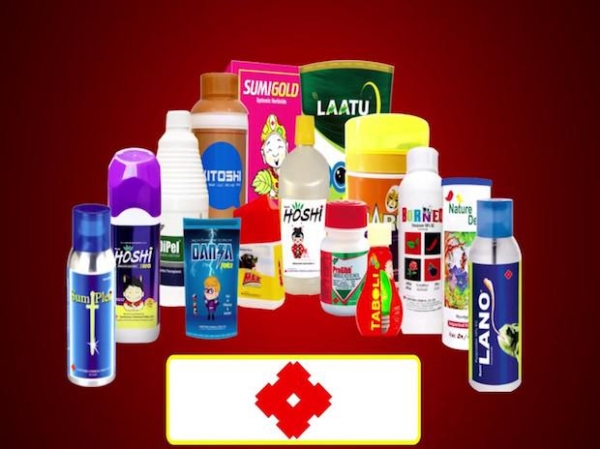
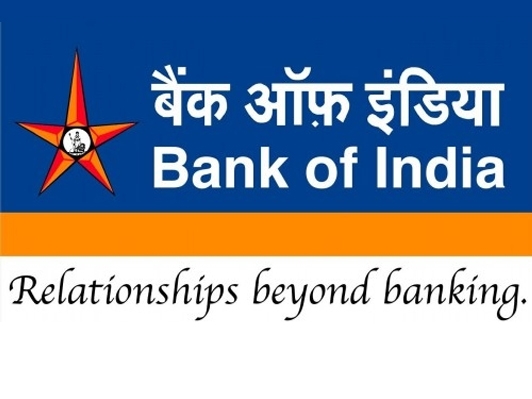
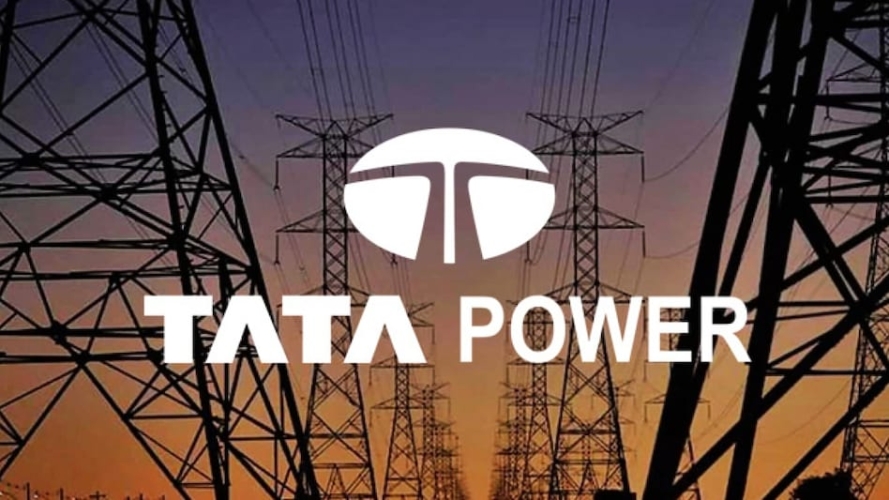
May 03 2024, 08:19
- Whatsapp
- Facebook
- Linkedin
- Google Plus
0